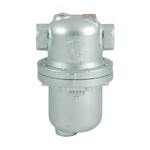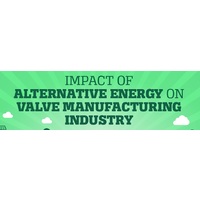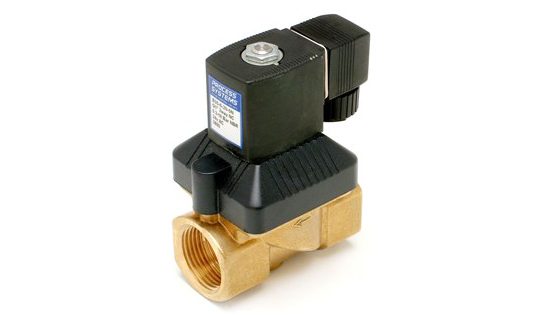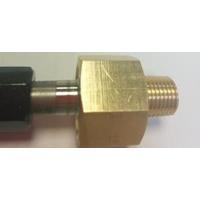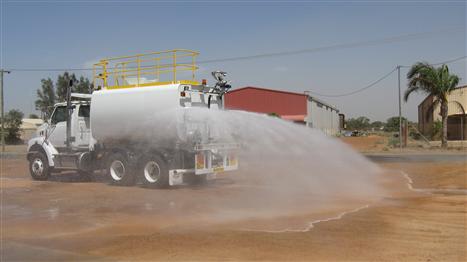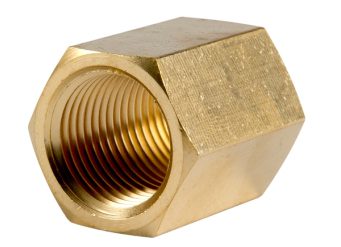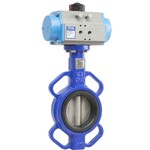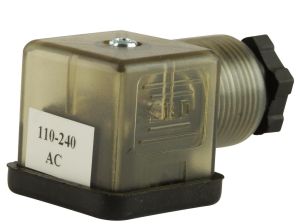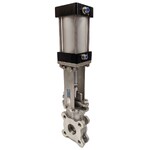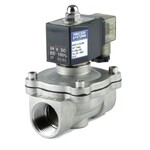Date Posted: 30 June 2021
Drain Separators in Steam LinesHow Increasing Alternative Energy Production Affects the Valve Manufacturing Industry
3 November 2016
By: Process Systems
The rising global use of alternative energy sources for the production of electricity means more countries around the world are working to find ways to transition from heavily polluting, carbon-based fossil fuels to cleaner, renewable forms of energy.
Alternative energy use carries a wealth of benefits that go far beyond helping with climate control concerns. As a result of this expanding trend, valve manufacturers find they must make appropriate adjustments to their products in order to successfully fabricate new equipment needed by the rapidly growing alternative energy industry.
Investing for the Future
Alternative energy is proving to be a solid investment in the future of energy production and consumption. Making the switch from the current trend of being dependent on fossil fuels for the production of electricity, to seeking out renewable energy sources that can help reduce the harmful effects of global warming. Cleaner energy production means less pollution, which in turn, will result in a healthier planet.
The Economic Impact of the Alternative Energy Industry
According to a report by the World Economic Forum, $286 billion was invested globally in alternative energy production as compared to the $130 billion invested in fossil fuel generation. By investing in research, development, and production of energy from renewable sources, the cost of electricity (per kilo-watt hour) has fallen below what it cost to create usable energy from such carbon-based sources as coal or oil. This means that more and more consumers can afford to switch to renewable energy to power their homes and businesses. A 2014 IRENA report (International Renewable Energy Agency) confirmed that it is equally, or in many cases, more cost-effective to use alternative energy for electricity production than it is to use fossil fuels.
.jpg)
Alternative Energy Benefits
The growing demand for alternative energy brings many additional benefits beyond just saving the environment. Alternative energy sources also helps with:
1. Job creation
2. Increased energy access
3. Increased educational opportunities (training necessary for newly created jobs)
4. Reduction in carbon emissions
5. Cleaner drinking water via less water pollution
6. Better air quality
We incorporated these principles into our own, custom built premises opened 3 years ago. We made full use of latest technologies in lighting, cooling, power, and water harvesting & purification to ensure our new factory is sustainable and environmentally friendly.
Impacts of Alternative Energy Production on the Valve Manufacturing Industry
As the global community continues to switch to renewable energy production, manufacturers of equipment used to produce carbon-based, fossil fuel-derived electricity are discovering that the designs of some of their equipment must be adapted for use with alternative energy sources.
There are examples as Solar thermal power plants which require the use of control valves that exhibit a high degree of reliability due to operating in a particularly hostile environment. The molten salt use in solar thermal energy production is extremely corrosive and abrasive. Control valves used in this environment must be manufactured to be able to withstand these harsh working conditions. These valves are designed with extended bonnets that help to insulate the body of the valve and assist with temperature control.
Another example related to control valves would be the use of hydrogen energy. Due to the highly reactive and explosive nature of hydrogen, it is imperative that designs for hydrogen control valves are carefully followed through each step of the manufacturing process – from the beginnings of the design concept, right down to the point of consumption. One of the biggest challenges for control valves used with this medium is that they close properly and tightly. When working with hydrogen, there really is no safe margin of error. Even the slightest burr in sealing surfaces may result in a valve that does not seal properly.
Also we have a connection between control valves and geothermal energy.There are three main types of geothermal energy processes commonly used today:
1. Dry Steam Process – This process converts steam from geothermal reservoirs into usable electricity through the use of generators or turbines.
2. Flash Steam Process – This process uses high pressurise water that is between 182 and 204 degrees Celsius and surface level generators to create electricity.
3. Binary Cycle Process – A binary cycle plant uses a steam or water reservoir and turbines that run a working fluid to create electricity.
Each application of geothermal energy requires control valves that have a high degree of heat resistance.
What the Future Holds
As countries strive to become more energy independent in the future, the demand for increased exploration into additional alternative energy sources (as well as additional production capabilities) will steadily rise.
Manufacturers and suppliers of industry-related equipment, such as control valves, must stay ahead of the growing trend towards alternative energy use in order to stay competitive and to remain relevant. Industry-specific research and careful design, coupled with implementing emerging technologies, will help to ensure the successful development and employment of quality manufacturing equipment needed to keep pace with industry changes brought on by advances in the renewable energy sector.
Recent Blogs
Date Posted: 3 November 2016
How Increasing Alternative Energy ProductionDate Posted: 4 February 2015
How to Install a Solenoid Valve
